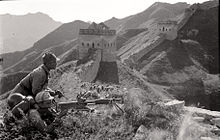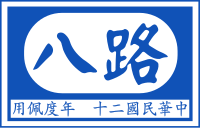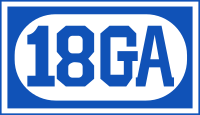Eighth_Route_Army
Eighth Route Army
Chinese Communist unit (1937–1947)
The Eighth Route Army (simplified Chinese: 八路军; traditional Chinese: 八路軍; pinyin: Bālù-Jūn), officially known as the 18th Group Army of the National Revolutionary Army of the Republic of China, was a group army under the command of the Chinese Communist Party, nominally within the structure of the Chinese military headed by the Chinese Nationalist Party during the Second Sino-Japanese War.
This article needs additional citations for verification. (January 2017) |


The Eighth Route Army was created from the Chinese Red Army on September 22, 1937, when the Chinese Communists and Chinese Nationalists formed the Second United Front against Japan at the outbreak of the Second Sino-Japanese War, as the Chinese theater was known in World War II. Together with the New Fourth Army, the Eighth Route Army formed the main Communist fighting force during the war and was commanded by Communist party leader Mao Zedong and general Zhu De. Though officially designated the 18th Group Army by the Nationalists, the unit was referred to by the Chinese Communists and Japanese military as the Eighth Route Army. The Eighth Route Army wore Nationalist uniforms and flew the flag of the Republic of China and waged mostly guerrilla war against the Japanese, collaborationist forces and, later in the war, other Nationalist forces. The unit was renamed the People's Liberation Army in 1947, after the end of World War II, as the Chinese Communists and Nationalists resumed the Chinese Civil War.



